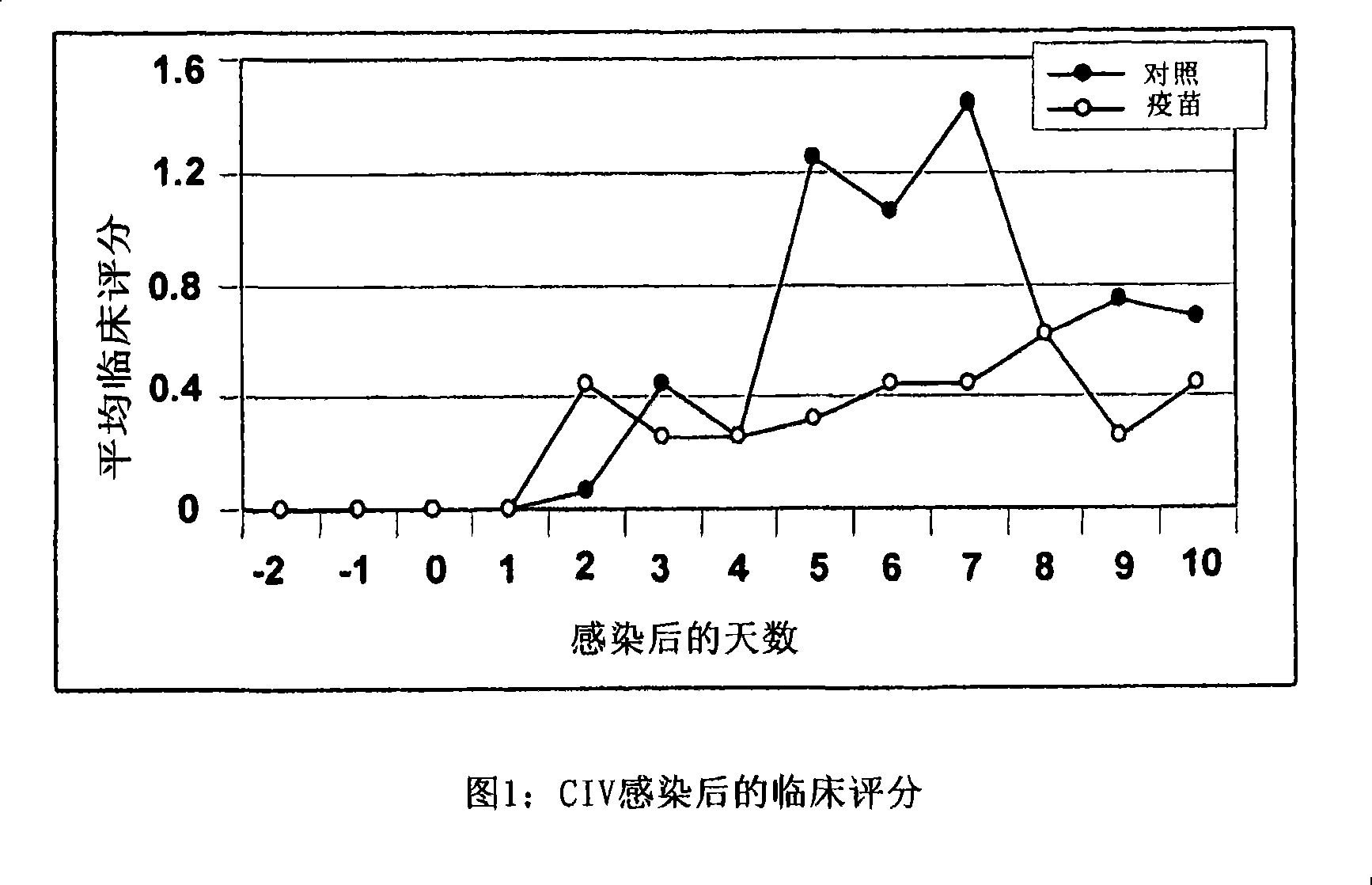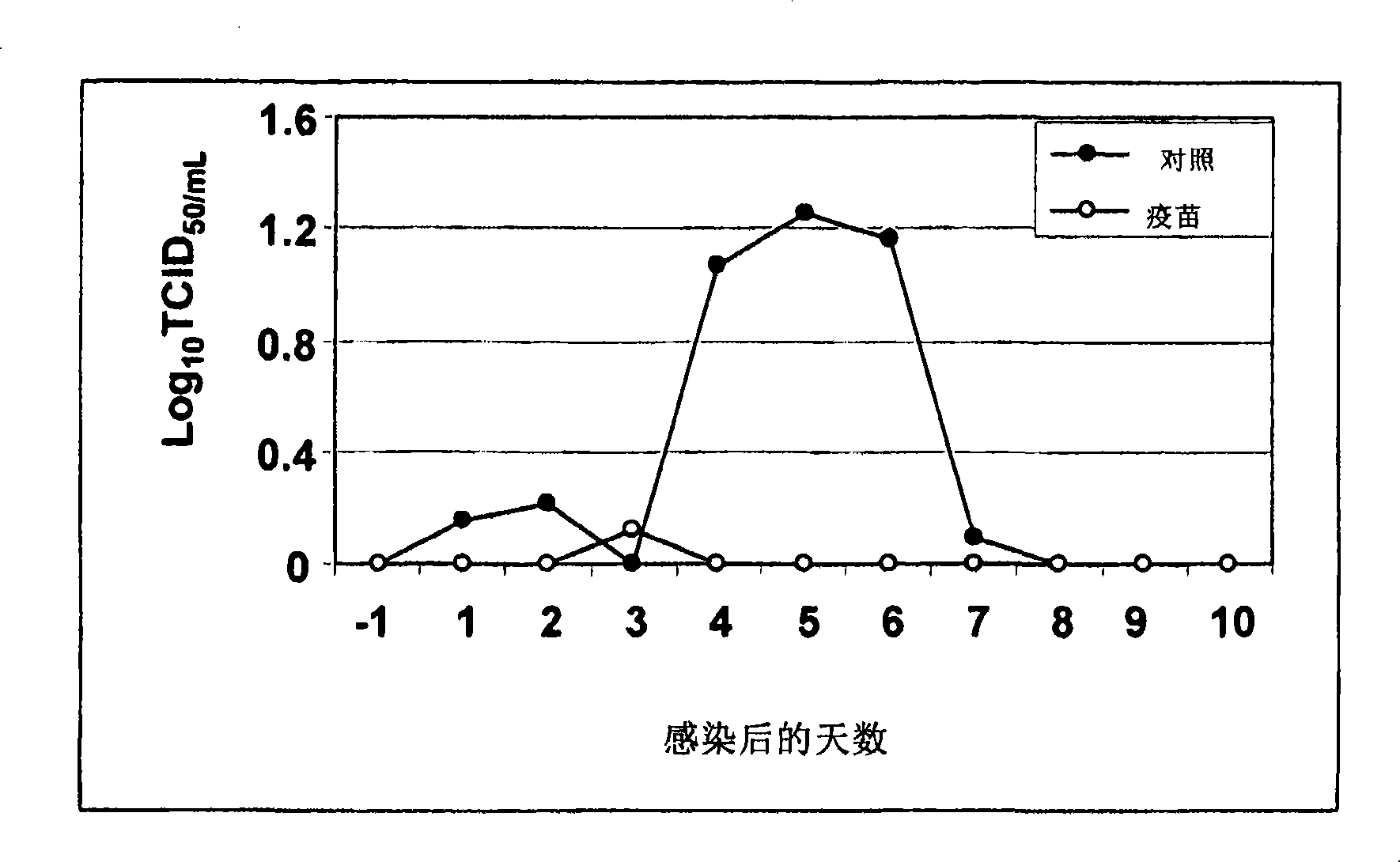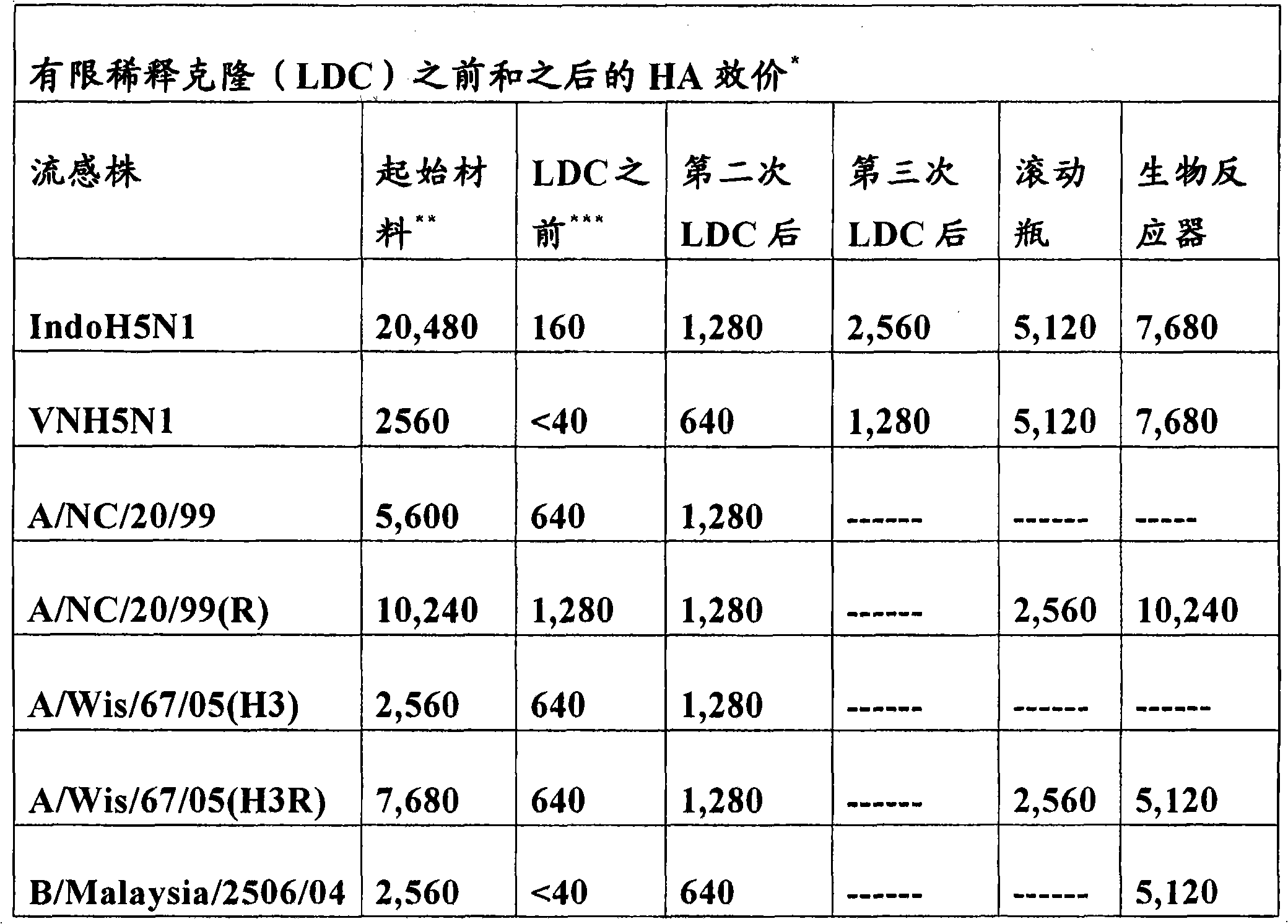Method for replicating influenza virus in culture
A technology of canine influenza virus and virus, which is applied in the field of new immunogenic composition, vaccine for canine respiratory diseases, and selection of influenza virus grown in human embryonic kidney cells, can solve the problems that are difficult to achieve and affect the antigenicity of vaccines
- Summary
- Abstract
- Description
- Claims
- Application Information
AI Technical Summary
Problems solved by technology
Method used
Image
Examples
Embodiment 1
[0114] Embodiment 1: chemical reagent and biological reagent
[0115] The infection medium used contained 1 L of DMEM (Cambrex, catalog number 04-096) or equivalent, stored at 2-7°C; 20 mL of L-glutamine (Cellgro, catalog number 25-005-CV) or equivalent, stored in -10°C or colder, once thawed it can be stored at 2-7°C for up to 4 weeks; and trypsin type IX (Sigma Product No. T0303, CAS No. 9002-07-7) or equivalent, aliquoted and stored frozen at -5 to -30°C. Infection medium was freshly prepared prior to infecting cells.
[0116] Cell culture medium was prepared as follows: 1 L DMEM, 20 mL L-glutamine, 50 mL fetal bovine serum (Gibco cat# 04-4000DK) or equivalent (Note: from BSE-free countries). Store complete media at 2-7°C for no more than 30 days after preparation.
[0117] EDTA-Trypsin (Cellgro Cat. No. 98-102-CV or equivalent) used for passaging cells was stored at -5 to -30°C with expiration date indicated by the manufacturer.
Embodiment 2
[0118] Example 2: Cell Culture Preparation
[0119] Because the protease dilution used for the virus infection step can vary from batch to batch, titrate a new batch of trypsin to establish optimal levels before use. An example of a titration is a serial dilution of trypsin type IX in DMEM containing L-glutamine with a half-log dilution (10 -1 、10 -1.5 、10 -2 、10 -2.5 Wait). Using a 96-well plate containing a fresh confluent monolayer of Vero cells, wash each well of the plate twice with 280 μL of PBS. Immediately after washing, 200 μL of each dilution of trypsin type IX was added to the plate in rows. Then place the plate at 37 °C plus or minus 2 °C in 5% CO 2 and observe the cells after 4 days. The lowest dilution of trypsin that showed no or little effect on cell health was chosen as an appropriate concentration of trypsin for isolation and optimization of influenza infection. It is desirable and common to have little or no variation between wells inoculated withi...
Embodiment 3
[0126] Example 3: Limiting dilution cloning
[0127] Dilution tube preparation and sample dilution for limiting dilution clones are as follows. Set up test tubes (12 x 75 mm) on a test tube rack and label them. One sample was assayed per plate, and the dilution series for each sample was 10 -1 to 10 -10 . The diluted medium was dispensed in 1.8 mL volume to each test tube with a serological pipette. The first tube is labeled Virus Identification. Several other tubes were prepared to serve as dilution controls and to be replaced in case errors occurred during dilution. Mix the sample by vortexing for approximately 5 seconds, then pipette 200 μL of the sample to 10 -1 Dilution Tubes Prepare starting dilutions. Continue serial dilution to 10 -10 . For each dilution, samples were mixed by vortexing and pipette tips were changed between dilutions.
[0128] Dilutions were transferred to cell plates as follows. Aseptically decant the medium from the cell plate immediatel...
PUM
| Property | Measurement | Unit |
|---|---|---|
| length | aaaaa | aaaaa |
| length | aaaaa | aaaaa |
Abstract
Description
Claims
Application Information
 Login to View More
Login to View More - R&D
- Intellectual Property
- Life Sciences
- Materials
- Tech Scout
- Unparalleled Data Quality
- Higher Quality Content
- 60% Fewer Hallucinations
Browse by: Latest US Patents, China's latest patents, Technical Efficacy Thesaurus, Application Domain, Technology Topic, Popular Technical Reports.
© 2025 PatSnap. All rights reserved.Legal|Privacy policy|Modern Slavery Act Transparency Statement|Sitemap|About US| Contact US: help@patsnap.com



